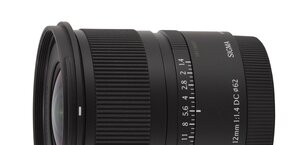Leica Summicron-M 50 mm f/2.0
4. Image resolution

Let’s first deal with the behavior at the center of the frame. Usually, as a good level of image quality we took 30 lpmm. Remembering the high MTF results generated by the sensor, in the case of M9 it’s fitting to raise the level by the already mentioned 15%, so to about 34-35 lpmm. Summicron doesn’t have any troubles with exceeding it, as at f/2.0 it records value of 38 lpmm. After slightly stopping down, it exceeds 40 lpmm, to reach the maximum of 50-51 lpmm at f/4.0-f/5.6. It’s hard to have any reservations, but we might sniff a little, but that’s to be discussed more widely in a while.
Please Support UsIf you enjoy our reviews and articles, and you want us to continue our work please, support our website by donating through PayPal. The funds are going to be used for paying our editorial team, renting servers, and equipping our testing studio; only that way we will be able to continue providing you interesting content for free. |
- - - - - - - - - - - - - - - - - - - - - - - - - - - - - - - - - - - - - - - - - - - - - - - -
As far as the edge of the frame is concerned, the situation here is not so bright. At the maximum aperture we have a value of as little as 25 lpmm. The new Nikkor AF-S 50 mm f/1.4, on a D3x sensor at f/2.0 recorded the result of 29 lpmm. And Nikkor’s 3 times cheaper than Leica! Fortunately, in the case of Leica, stopping down by 1 EV means largely exceeding 30 lpmm and allows us to be glad about the image sharp in basically the whole frame.
As we’ve already mentioned at the beginning, comparing the results obtained on M9 to the ones from full-frame DSLRs is going to be hard. Fortunately, it turns out that the maximum results at the center of the frame, exactly the same as Leica’s, recorded lenses tested by us on Olympus E-3. There, the sharpest of fixed focal lengths also record results of about 50 lpmm at around f/4.0-5.6, so directly comparable at the center of the frame. We can clearly see that on the graph below.

We can see here the performance at the center of the frame, of Summicron tested on M9 and Olympus ZD 25 mm f/2.8 and ZD 50 mm f/2.0 ED Macro, and also Leica D Summilux 25 mm f/1.4 tested on a 10-megapixel sensor of 4/3 format. As you can see, where the diffraction’s the only thing influencing the image, and not optical aberrations of the lenses, and so, in this case from f/4.0 up, MTF50 values obtained by all four lenses are, within the measuring errors, the same.
At f/2.8 all the lenses record excellent results. Leica 25 mm and ZD 50 are a class by themselves. Summicron is just a bit better than the “pancake” 25 mm, for which f/2.8 is the maximum aperture. At f/2.0 Summicron is distinctly short of both Summilux and Olympus 2.0/50. How to interpret that? Has the emperor no clothes on?
Not really. This only shows how well-thought the system of 4/3 lenses is. It hurts even more to see how the idea of this system is distorted by excessive packing of pixels in Panasonic sensors (I’m sorry, I couldn’t resist). Designing lenses for a small 4/3 sensor we can focus on a small area and make a lens excellent both at the center and the edge of the small sensor. Designing something for a full frame, we don’t have this opportunity. If we want to have good edges, we need to design the lens so that it’s not excellent, but only very good at the center. And that’s what we think we’re dealing with in the case of Summicron-M 50 mm f/2.0.
There’s also one more thing in Leica M system’s defense. Both Summilux 25 mm and Olympus ZD 50 mm f/2.0, though designed for a small sensor, are much bigger than Summicron. The “pancake” 25 mm is, on the other hand, smaller, but in its case we’re dealing with f/2.8 brightness.
Are our results correct? You can check that by checking the MTF graphs for Summicron-M 50 mm published by Leica. You can see a few important things there that confirm us in what we wrote. The values of MTF function for the resolution of 40 lpmm (so describing the details of the picture) are not always the highest at the center of the frame, but often show some fluctuations connected with the constructor’s choice to care about the edge of the frame, slightly sacrificing the center.
At the end of this chapter, we present the clippings of our test chard obtained from JPEG files saved simultaneously with RAW files. Sharpening was set to the minimum level, which in the case of M9, as we wrote in the camera’s test, is indeed zero-sharpening, as Leica treats the JPEG files very softly in this respect.
 |






